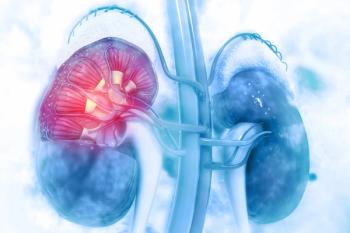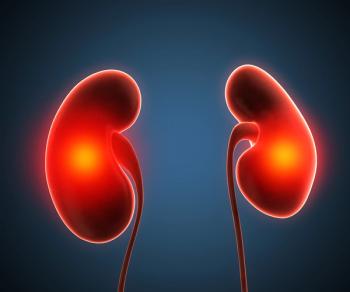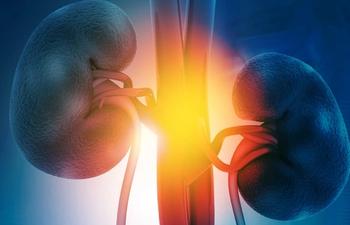
- ONCOLOGY Vol 12 No 11
- Volume 12
- Issue 11
Intraoperative Ultrasound-Guided Cryoablation of Renal Tumors
Renal cancer occurs in nearly 10 of every 100,000 people in the United States and in approximately 45 of every 100,000 of those over 65 years of age. Standard treatment is open surgery, often involving total removal of the tumor along with the kidney. However, a study in the September issue of the Journal of Ultrasound in Medicine reports that ultrasound-guided renal cryoablation is a feasible technique for treating renal malignancies while still preserving the renal parenchyma.
Renal cancer occurs in nearly 10 of every 100,000 people in the United States and in approximately 45 of every 100,000 of those over 65 years of age. Standard treatment is open surgery, often involving total removal of the tumor along with the kidney. However, a study in the September issue of the Journal of Ultrasound in Medicine reports that ultrasound-guided renal cryoablation is a feasible technique for treating renal malignancies while still preserving the renal parenchyma.
Sparing Renal Tissue
Harry G. Zegel, MD, and coauthors from theAllegheny University Hospitals in Pennsylvania and Urology Specialists of Coastal Georgia write, "Recent advances in cross-sectional imaging (ultrasound, MRI, CT) have led to increased detection of small, asymptomatic renal tumors. Also, in selected cases, patients undergoing partial nephrectomy have been reported to have rates of survival similar to those of patients undergoing radical nephrectomy. This has led some physicians to question the need for radical nephrectomy in patients with small lesions. While partial nephrectomy spares the maximal amount of functioning renal tissue, and often eliminates or postpones the need for dialysis, this technique is associated with risks. Hence, better kidney tissue-sparing techniques may be of benefit in selected patients."
The study examined the feasibility of using ultrasound-guided cryosurgery to treat selected patients with renal malignancy by studying the technique in six patients with renal tumors.
Benefits of Intraoperative Ultrasonography
In the study, intraoperative ultrasonography accurately delineated tumor size, cryoprobe placement, and depth of freezing in all patients. In addition, intraoperative ultrasonography identified a total of nine additional lesions in three patients that had not been detected by preoperative imaging. The patients have been followed with clinical and laboratory assessments, as well as MRI or CT imaging, and all were tumor-free 3 to 22 months, postoperatively.
In conclusion, the authors write, "we conclude that cryoablation with intraoperative ultrasonographic guidance is a promising new technique for treating renal masses while preserving renal parenchyma and function. Long-term follow-up in a larger series of patients with biopsy-proved lesions is necessary to determine the true efficacy and safety of this procedure."
Articles in this issue
about 27 years ago
Phase III Results of Second-Generation HIV Protease Inhibitor Reportedabout 27 years ago
Telomerase Rejuvenates Cells Without Causing Malignant Transformationabout 27 years ago
Hoechst Marion Roussel Launches Antiemetic Information Centerabout 27 years ago
Telomerase Rejuvenates Cells Without Causing Malignant Transformationabout 27 years ago
First Doris Duke Clinical Scientist Awards Announcedabout 27 years ago
Phase III Results of Second-Generation HIV Protease Inhibitor ReportedNewsletter
Stay up to date on recent advances in the multidisciplinary approach to cancer.
















































































